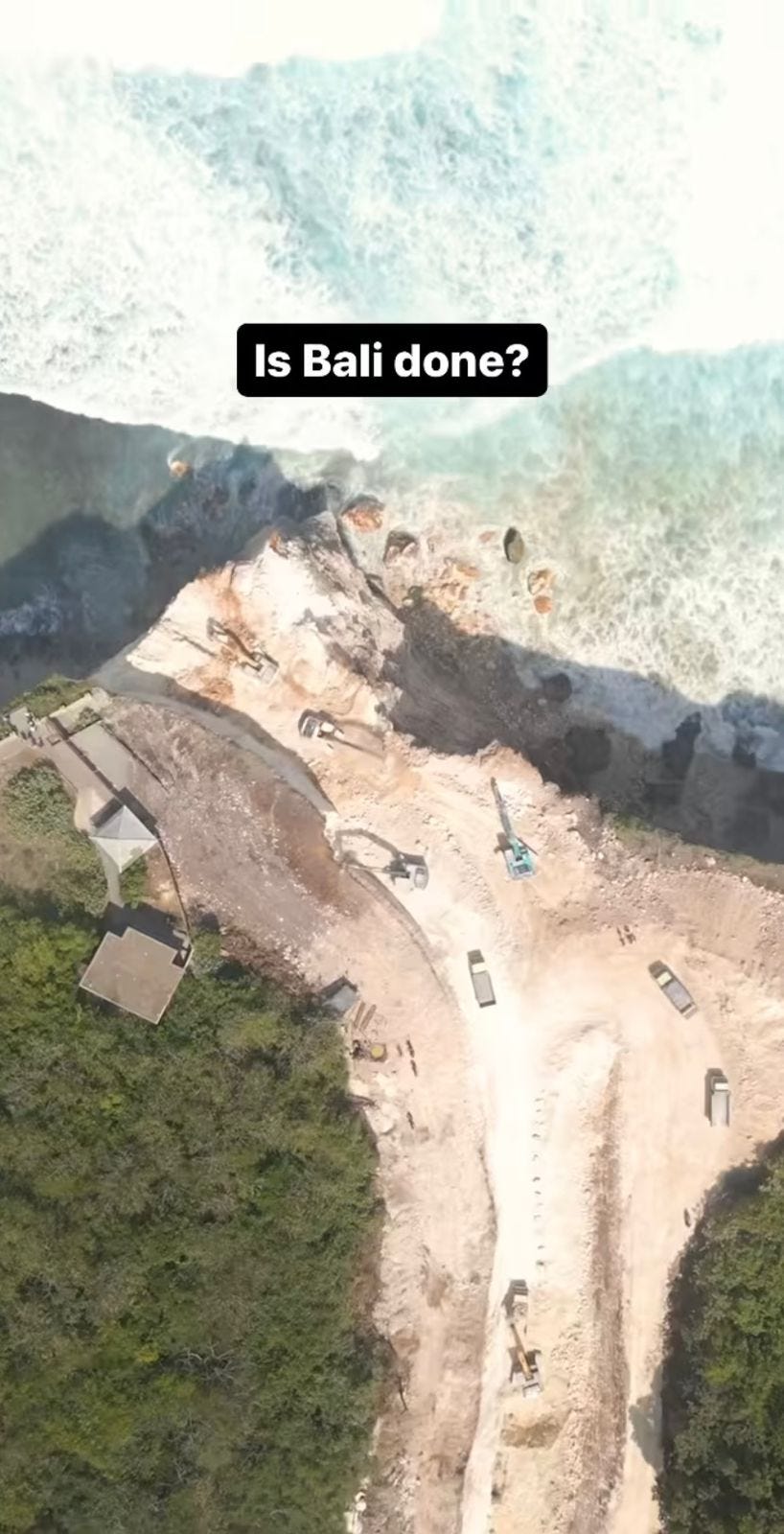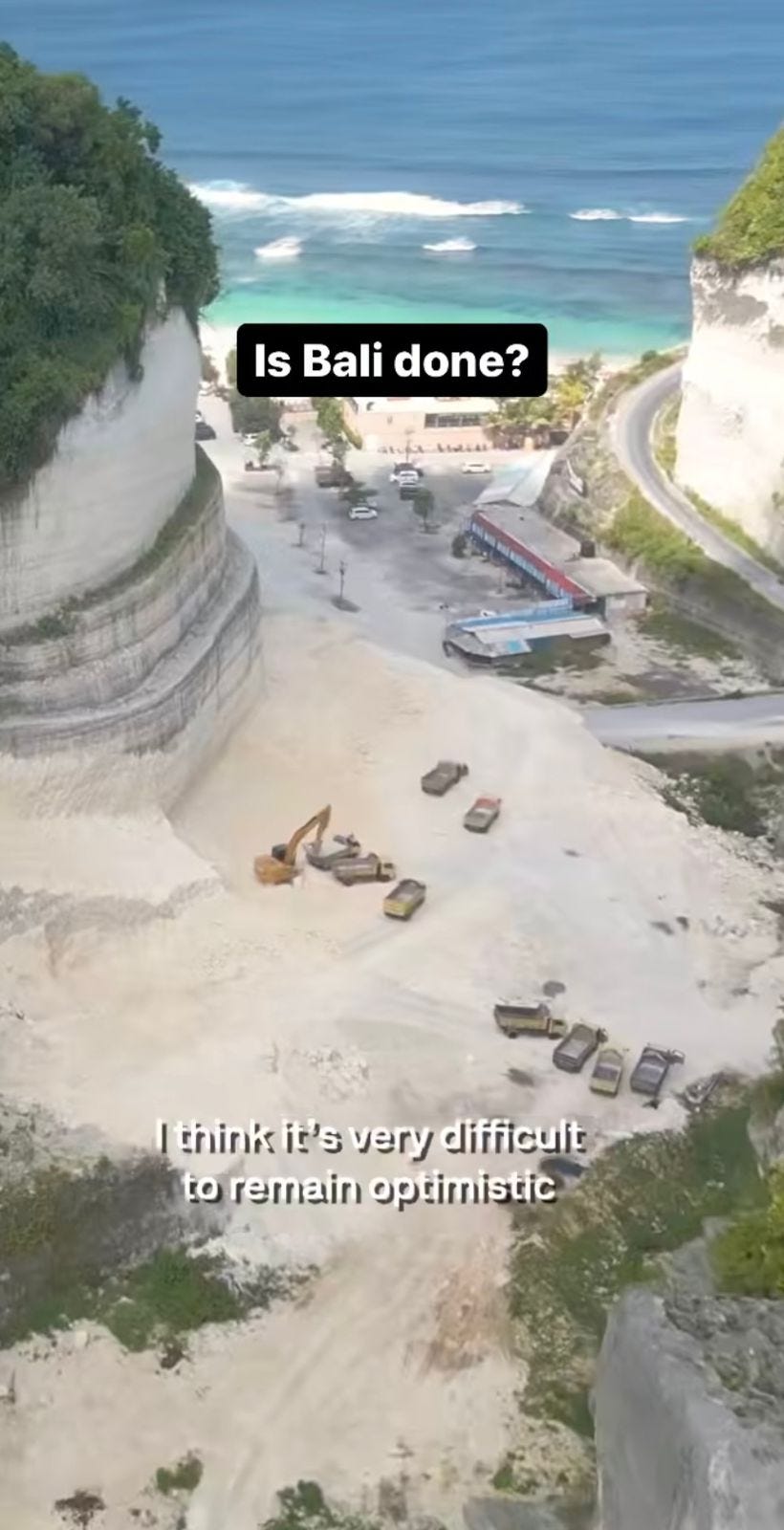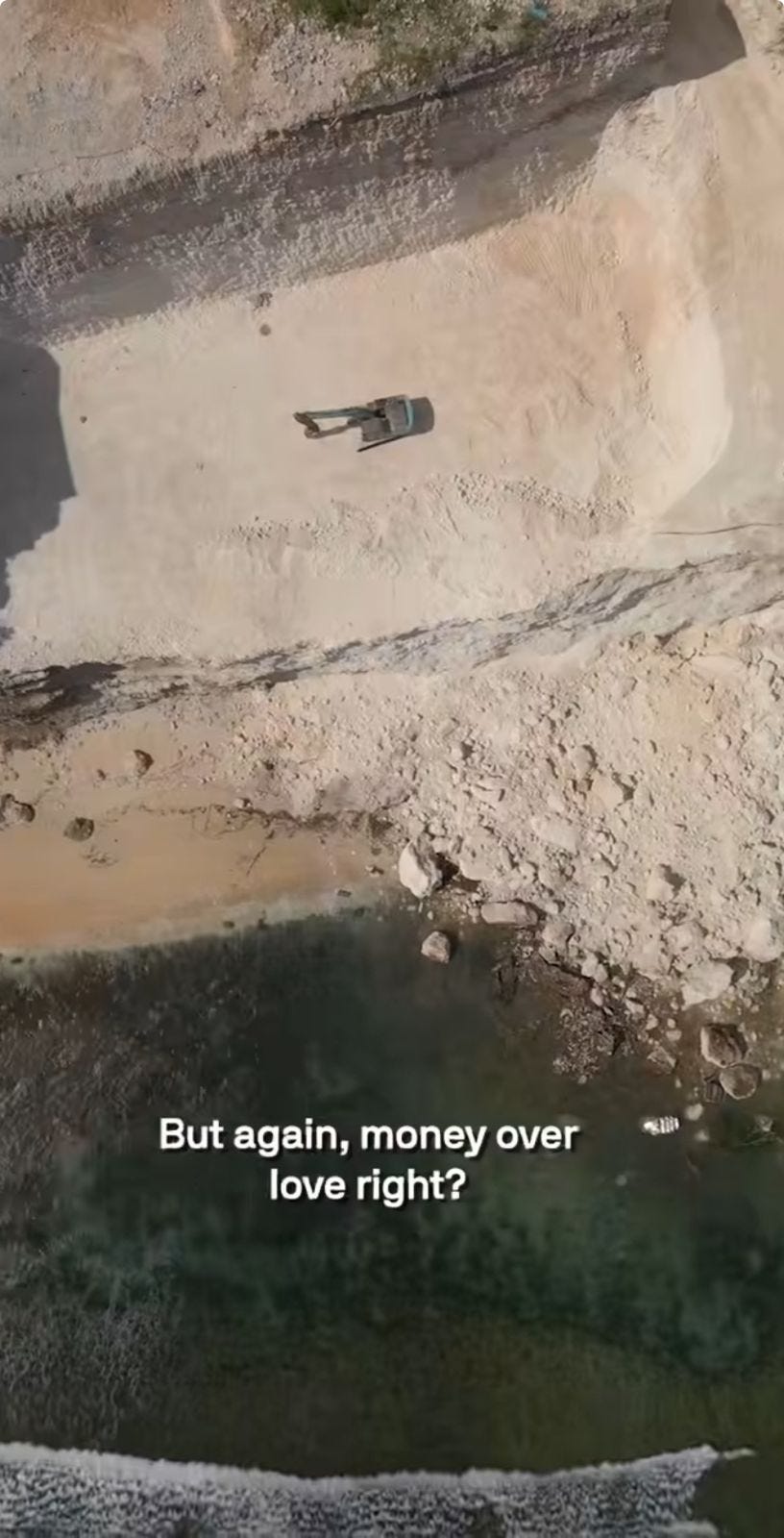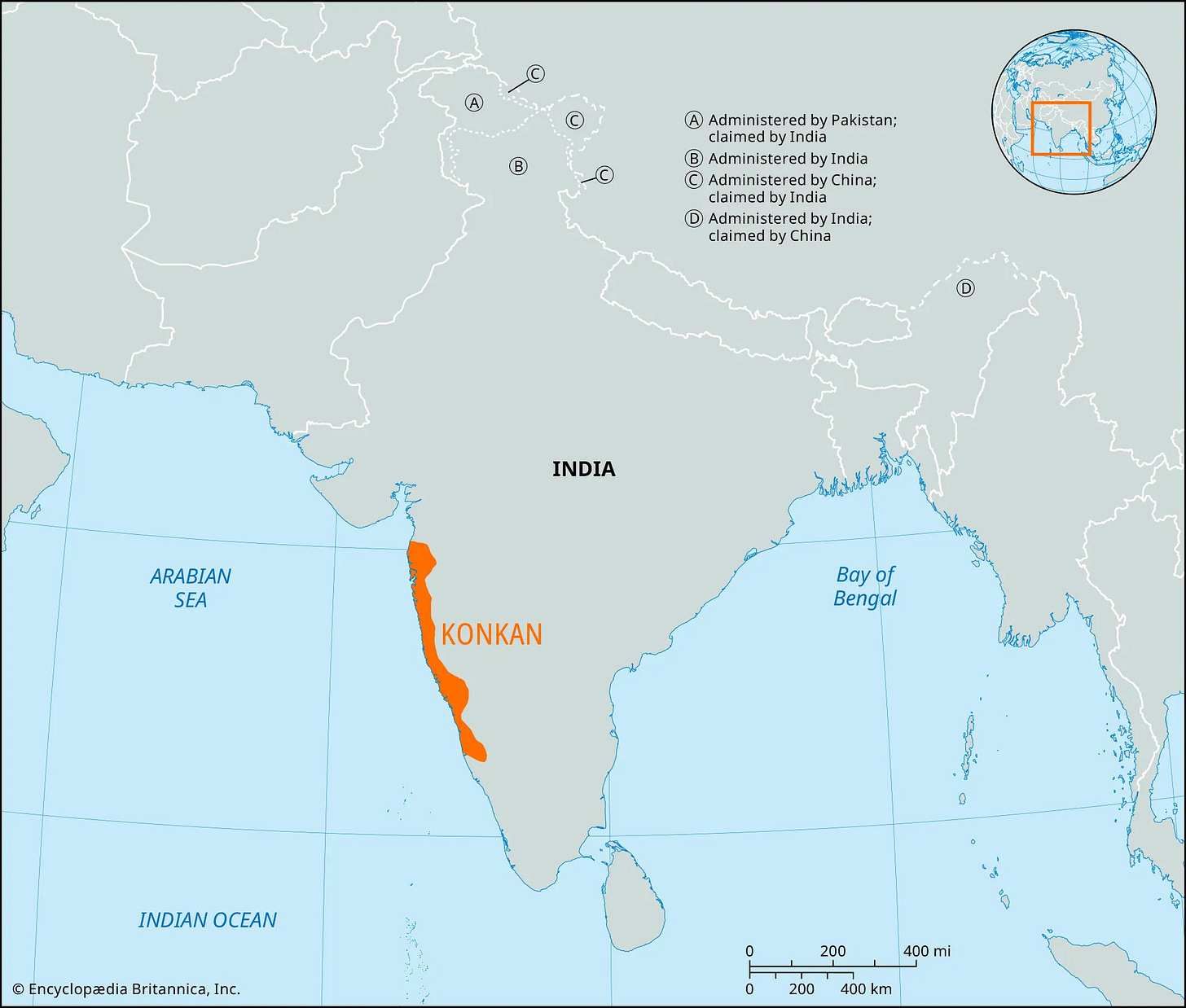Last night a video surfaced on my instagram — the pristine hills in Bali are being cut down, in the name of development. “They are cutting down the island in the name of protecting the island”, the post read. Rightfully, there were many people from the western countries putting out their arguments on the little corner of the comment section at the bottom. For many, this place is a little slice of heaven— it is no less than paradise. All this “development” has only happened in the last 10 years. The content creators, youtubers and instagrammers are to blame for pushing this tourism bubble to its breaking point.
This was a long time coming though and it was quite obvious that the locals and the government authorities would be blamed for this, and rightfully so. They are gaslighting the place, tearing down the mountains, cutting the trees, pillaging the islands. Corruption seems high within the system. But, are they the only ones to be blamed? —I don’t think so.
It is a similar case to what happened in a paradise like Goa. The once quaint beaches, calm villages and hilltops that whispered sweet songs with the blowing winds, were ushured into a ‘tourism’ hellspace —inviting ideas that would eventually end up murdering the landscape for more villas, more 5-star hotels, resorts which would end the culture and make everything homogenised or more specifically “western” or to be even more specific “American”. After all, this is what happened to the paradises of Hawaii and Puerto Rico.
Now, I know that I run the risk of offending many of you here, but I know that its not you who are pushing this “Americanization”. Its the machine-like cities and the robot-like (still) humans in those machine-like cities who are pushing this. The screens provide them with endless fodder on what an ‘ideal’ life should look like and of course the screens provide them with an endless American entertainment —which happens to be the end goal of this so-called “progress”. We grow up watching soap operas based in tall buildings and tiny conference rooms overlooking the skyline— they are never based in lets say - rural Kentucky or Huntly, Aberdeenshire.
This is the same thing I saw when I travelled through Vietnam and I wrote the following lines then:
“
Every city and every village in Vietnam other than the obvious touristy and commercial districts look self-similar. I think that is what happens when you decide to take the western ideals of progress as an end goal. You end up murdering culture. You end up destroying history.
You can buy my book which is a memoir about my 1800 km walk through India through my website. Thankyou, really!
I think I see this in any place that I am at now. An entire class of society stuck to their television sets —watching western shows or shows based on the western models of reality tv —and then you have people like me who are merely passing by. We see the politics on its knees- pleading for a revival. We see the changes happening in the societies at breakneck speed and not just in foreign societies but also in the society that we come from. I wonder if it is even logical to settle own in a place when all places have turned into a video game set, which has the tendency of working by the rulebook and following orders.
Hue has turned into a party destination, extremely different from what I had seen in Anthony Bourdain’s travel series. I am wondering, if he was alive, what would he make of this extreme form of soul-less tourism? The turning of local people into cogs of a huge machine that runs on tourism and the foreigner - unlike Bourdain - who has stopped entering the soul of this nation; who rather enjoys the perks that come along with the cheap exchange rate…
”
The older generation, who turned these places into what they are today, did not expect any of this. They were in the South-East Asia because they liked the calm, the chaos of it. They too were running away from the madness of their western cities. They were running away from Westernisation, from the Americanization of their homes - wherever they may be.
These were not tourists, they were travellers— not so different from the other long distance travellers of the older times. They were here because they had profound questions about life, about themselves; they wanted to experience culture, eat the local food, stay with locals, in a bid to understand their customs and traditions — and of course smoke a little bit of marijuana- but who can blame them for that. The world is nuts even when everyone is sober!
If you would like helping out this pen pal (me), then you can do so by ‘buying me a coffee’!!
The locals and natives on the other hand are trapped in the myth of ‘development’. They want to become like the western cities. They want the blocks like the American cities. They want concretised pathways and minimal trees around their landscape which is currently filled with jungles. The forest is a bit too much for them. Don’t get them wrong, it did help them with the materials needed for sustenance- but sadly not anymore. Now, money does that trick!
Only last summer Sanju dada felled a couple of trees on the road (more about him here) that connects to our house. This road that later leads to the beach was interesting only because it had this dense forest cover. I asked him his reasons and his reasons didn’t seem too uncommon. What would you do if you were living in a jungle all your life and the one time that you end up travelling to an urban city, all you see is open roads and a few trees— wouldn’t that be the ideal of ‘progress’ for you too?
I don’t know, it seems odd and uncontrollable, because this is not just a person or two, but its an entire society being westernised in real-time- through tv’s, through ideal urban cities, through McDonalds and KFC’s. I guess its the same issue in the West— that many of the politicians and bureaucrats, in a bid to push this machine-like ecosystem, have totally forgotten that there is a large part of their respective societies that lives away from all this urban environments, they live in smaller towns, they are connected by community and love. Yet, they don’t care and they are coming for you too! It is extremely hard to stay optimistic in such conditions—but we must. Change is impermanent, as Buddha says, but what we can actively do and hope for is for this ‘change’ to be the right and ethical direction.
A common theme these days in India is felling of hundreds of years old trees in the name of road expansion and then building walls around it and painting the walls with slogans like “SAVE TREES” “SAVE LIFE!” — talk about contradictions, but hey, who stays to see the transition? People have such a short attention span these days that they forget in a week and the officials are off to another site to fell more trees.
Now, back to my village, this is the same thing that is happening in my village. The ideals of our so-called politicians are based on money—money over love—money over compassion—money over freedom and connection with nature/with God. If this project goes through, (more about it here) then our village and this entire coastline of 600 km will end up looking somewhat similar to the photographs above. This is why I am walking, this is why I am doing something that I know will invite criticism and hate. (You can contribute for this walk by using the link towards the end of this newsletter) Because the base of this conflict is contradiction. The contradiction of development. The ones who have seen this so-called western development, understand its impact on the ecosystem. They understand the irreversible damages that can change the livelihoods and snatch away the peace of locals, but then the locals and frankly the politicians and influencers who push them to a breaking point, would say something like, “Isn’t progress good? Shouldn’t our Konkan too turn into California?” But hidden behind this question would be another fact, big money for the politicians and influential people and forced migration to urban cities for the locals. Now, who is to blame?
What do you think?
If you have reached this far then I hope it means you like what I’m doing and if so you might consider supporting me by ‘buying me a coffee’ -which is a one off payment rather than a continuous subscription. (Substack does not let me monetize my articles because I am based in India)
Payments, however small, encourage me in my writing and mean that I can spend more time honing my skills.
You can buy my book which is a memoir about my 1800 km walk through India through my website. Thankyou, really!
There is one more thing by the way.
Most of you joined this Substack after reading stories from Saving a Village. In that series, I spoke about the urgency of taking action against the looming threats of deforestation, coastal highway projects, and the chemical and oil factories set to rise in this eco-sensitive zone. These developments could devastate many villages, including mine. That’s why I’ve decided to embark on a 500-kilometer journey across this stretch of land.
My purpose isn’t political, nor am I here to point fingers at specific companies or factories. Instead, I want to visit each village, sharing the message that while change is inevitable, it’s vital that we steer it in the right direction. I have no desire to cast myself as a hero; my goal is simply to witness this land and its fading culture before it's too late. However, if I can raise awareness and ignite even a small spark of understanding, I’ll be content knowing I did what I could.
But I can't do this alone. To plan the walk and cover necessary supplies, I need your support. Unfortunately, platforms like Kickstarter and other crowdfunding sites aren't available to me here in India, so I’m relying on your donations. You can contribute through PayPal—here’s the link. For donations over $30, I’d love to send you a personalized postcard as a token of gratitude.
I’ll delve deeper into this journey in the upcoming newsletters. Thank you for your support!!








Ashutosh-although I am not a paying subscriber, I want to encourage you to keep delivering your message. As an American I can assure you that becoming like “California” is not a goal any country or culture should embrace. The beauty God created is richly diverse! Stand strong-truth tellers are rarely appreciated.
Elizabeth
The geodesic dome inventor engineer dedicated to life enhancing sustainability on Spaceship Earth, Buckminster Fuller, discussed many of these problems starting way back in the 1930’s. A term he coined, ephemeralizarion, described his observation of “using less but doing more” as a solution to our problems. I had the pleasure of seeing Mr. Fuller give a lecture around 1981.
Anyway, to keep this comment short, here is a link to a song by John Denver, called Its About Time. The song is nearly forty years old and describes sentiments that Ash writes about.
https://www.youtube.com/watch?v=yDPS4Eok2uM&list=PLX1KR-y7PzzrpGsv6Ppw2symSvgmpbdyJ&index=10&pp=iAQB8AUB